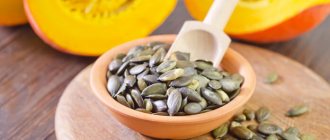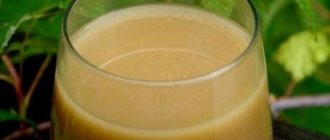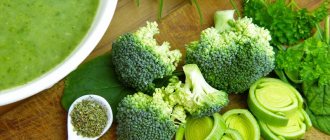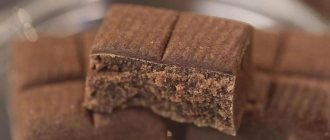Walnuts contain omega-3 unsaturated fatty acids, as well as a complex of vitamins and mineral components, including rare elements (iodine, manganese, selenium). Regular consumption of fruits helps prevent dangerous pathologies, including heart attack, stroke and diabetes. At the same time, you should consume no more than 10-12 kernels per day, since the product is high in calories.
When is Walnut Day celebrated?
In June 1949, the United States proposed an annual observance of National Walnut Day. This was done to popularize the royal nut. And on March 3, 1958, the 34th President Dwight David Eisenhower issued an official statement that this day was now fixed for May 17, then the celebration of the first National Walnut Day took place.
Ripe walnut
Walnut, where did its name come from in English and Russian?
Walnut in English is walnut, the word comes from the Old English wealhhnutu, literally “foreign nut” (from wealh “foreign” + hnutu “nut”), as it was brought to England from Gaul and Italy. The Latin name for the walnut was nux, meaning "Gallic nut".
The Russian name is also associated with the origin of walnuts. Pavel Syutkin, a historian of culinary and Russian cuisine, writes: “In Russia, acquaintance with walnuts apparently occurs in the 12th-13th centuries, when close contacts were established with Byzantium. It is from there that nuts come to us, but they are called “Greek”. Then many products and objects coming from this part of the world are called “Greek”, for example, buckwheat, known to everyone (according to one version of the origin of this word).”
Walnuts were also called “royal nut”, “Greek nut” and “Voloshsky nut” in Russian.
Fruit of the walnut tree
Garlic
Garlic contains many useful components that help restore cartilage tissue and suppress inflammatory processes. This product contains a large amount of sulfur-containing substances, which strengthen cartilage tissue. In addition, regular consumption of garlic prevents swelling and helps cope with pain that occurs as a result of rheumatoid arthritis. It is important not to overuse this product. It is recommended to eat no more than three cloves daily.
Walnuts, where do they come from? From Greece?
Walnuts, according to one of the most common versions, originated in Northern India. In the middle of the 15th century. Constantinople, the capital of Byzantium, fell under the onslaught of the Turkish Sultan. Pavel Syutkin: “Trade ties with Russia were interrupted for a long time. Around the 16th-17th centuries, their new name appeared in Rus': “Volosh nuts”. These are the same walnuts, only brought to us from Wallachia (the south of modern Romania).”
In Vladimir Ivanovich Dahl’s we find: “Nut is masculine, a tree fruit in a hard, strong shell. Sometimes they say instead of hazel and hazel, walnut or walnut tree, meaning Voloshsky nut, walnut.” By the end of the 19th century, the name “walnuts” became predominant in the Russian language.
Encyclopedic Dictionary of Brockhaus and Efron : “Walnut, Voloshsky nut (Juglans L.).”
Eggplant rolls with walnuts, see recipe here
Now, as promised, let's talk about the benefits and harms of walnuts.
What are the dangers of stale, expired and moldy nuts?
These nuts are often sold at a good discount. The seller will assure you: rinse it, eat it safely, add it to baked goods. Don’t be tempted by the low price: these nuts contain a fungus that produces aflatoxins - dangerous substances that threaten not only health, but also life!
Aflatoxins (mycotoxins) are waste products of fungi that cause irreversible changes in the liver. High doses cause death within a few days; chronic intake of substances in small doses greatly increases the risk of liver cancer, disrupts the immune system, and the functioning of the endocrine and nervous systems. The peculiarity of aflatoxins is their resistance to high temperatures, alcohol-containing liquids and soap (they are destroyed only during prolonged and severe heat treatment, which is impossible with nuts).
The ideal environment for the proliferation of moldy fungus of the genus Aspergillus is moist and warm. Those. If stored improperly, nuts become actively colonized by fungi and become hazardous to health. The harm of walnuts to the body if they are infected with fungi is not a myth, but a real threat to health. Think 1000 times when buying peeled kernels by weight!
How to detect that the kernels are affected by a fungus? Unfortunately, this is difficult to do. If, when cracking a nut, you see a barely noticeable cloud as if made of pollen, the nut is damaged!
Walnuts, benefits and harm. And detail?
In terms of calorie and protein content, walnuts are comparable to meat, but are easier to digest. Citrus fruits are superior in the amount of vitamins. They are recommended for vitamin deficiency, iron deficiency, as a general tonic; they have a positive effect on the blood vessels of the brain and relieve nervous tension.
Benefits of walnuts
- Memory improvement. Nuts contain omega 3 and 6 essential fatty acids, which help improve memory and cognitive function.
- Preventing depression. Research has shown that low omega-3 levels can harm your alertness and vitality. Since walnuts are high in omega-3, they help prevent depression.
- Improved motor function. Omega-3 fatty acids do wonders for the brain, including improving motor function.
- Preventing heart disease. Studies conducted in the US, Australia, New Zealand, Spain and Israel concluded that two to three servings of walnuts per day lowered cholesterol levels sufficiently to reduce the risk of coronary heart disease.
- Improvement of "masculinity". A handful of walnuts eaten every day increases the viability and motility of sperm.
- Skin beauty support. Eating walnuts helps the skin look younger - healthy and elastic. Thanks to vitamin E for this. By the way, walnut oil is a valuable cosmetic product for reducing dry skin.
- Walnuts are a source of biotin (vitamin B7), which helps keep hair and nails healthy and prevents hair loss and brittle nails. Vitamin E gives hair and nails a healthy shine.
- Help with weight management. Walnuts are high in fiber, protein, and fat, which help you feel fuller longer.
- Extra boost of energy. Walnuts contain many B vitamins (B1 - 0.39 mg, B5 - 0.82 mg, B6 - 0.8 mg, etc.). They can increase the amount of energy in the body. This definitely fits with the weight management factor. When you're energized, you're more likely to get active and burn calories! Try regularly eating walnuts with natural yogurt as an afternoon snack or a pre-workout snack.
Harm of walnuts
The dangers of walnuts are probably not entirely correct. There are some restrictions on the consumption of walnuts - that’s more accurate. Walnuts are high in calories, so consuming them in excess may lead to slight weight gain. In some people, high consumption of walnuts may be associated with diarrhea due to the nuts' high oil content. Below we will tell you exactly how many walnuts you need to eat per day so that no problems arise.
Walnuts, like other types of nuts, can cause food allergies. Currently, nut allergies are diagnosed in approximately 2% of the world's population.
Red bean pate with walnuts, see recipe.
Medicinal properties
The healing properties of hazel fruits have been known since ancient times. During the reign of Cleopatra, they were widely used in folk healing and cosmetology. Today, a huge number of medicines are produced from walnuts, their shells and partitions - tablets, ointments and balms. In cosmetology practice, these same products are used to create anti-aging creams, oils, cleansing masks, shampoos and other similar products.
Depending on the purpose, medicinal preparations based on walnut products have antimicrobial, regenerating, analgesic, immunostimulating, anthelmintic and hypoglycemic properties.
Reference.
Regular consumption of 3-4 nuts will help improve your well-being, strengthen your immune system and prevent many diseases.
The medicinal properties of walnuts are as follows:
- increase immunity and overall body resistance;
- have a positive effect on the digestion process, eliminate constipation;
- increase hemoglobin;
- reduce the likelihood of malignant tumor formation;
- support natural intestinal microflora (research);
- contribute to the restoration of vascular walls;
- improve blood circulation;
- restore vision;
- improve memory and brain function;
- promote the elimination of cholesterol, which reduces the likelihood of a heart attack or stroke;
- strengthen the body's defenses, eliminate fatigue and drowsiness.
Walnuts are an indispensable product in a big city. In addition to the therapeutic effects already mentioned, they help cope with daily stress and protect the body from the harmful effects of radiation.
Walnut partitions
Walnut partitions have several good effects on the human body:
- As the main component of infusions and decoctions, they strengthen the immune system, and, consequently, the entire body;
- The drugs are based on normalizing metabolic functions, killing bacteria, and preventing the appearance of tumors.
In addition, in certain compositions the partitions:
- help cleanse the bronchi, prevent coughing, and have an antitussive effect;
- clean vessels;
- improve memory;
- calm the nerves;
- normalize the duration and quality of sleep;
- replenish the lack of iodine in the body.
Preparations containing walnut septa are recommended and used for:
- hormonal imbalances;
- weak immunity;
- iodine deficiency;
- unstable or high blood pressure:
- inflammation of the pancreas;
- diabetes;
- overweight;
- disorders and exacerbations of gastrointestinal diseases;
- mastopathy and uterine fibroids;
- colitis;
- bronchial asthma;
- conjunctivitis;
- pain in the lumbar region
- severe fatigue, exhaustion;
- prostate adenoma;
- in a number of other cases.
Walnut shell
Thanks to coumarin in walnut shells, decoctions based on it disinfect open wounds and promote their speedy healing. It also contains phenol, which is an excellent antiseptic, and carboxylic acids, which accelerate metabolic processes. The nut shell is rich in vitamins. Most of all, it contains C and E, which strengthen the immune system and normalize the functioning of hormones.
Walnut shells are an excellent remedy, the result of which is a quick and high-quality treatment of various skin diseases. To combat eczema and lichen, it is worth recommending a special recipe - a decoction of crushed shells and dried hazel leaves. To prepare it, you need to take the shell of 10 nuts, add 100 g. dry leaves, pour a liter of boiling water and cook for 20 minutes. Then let the broth brew for 3-4 hours and strain. Take the medicine orally 2 times a day, one glass, before meals. The course of treatment is 1.5 weeks.
Walnut kernels
The rich composition of walnuts provides a variety of healing properties. Since they contain a large amount of ascorbic acid, the kernels are often used as a general tonic and immunostimulating agent.
Reference.
The vitamin C content in walnuts is almost several tens of times higher than in citrus fruits and 8 times higher than in black currants.
The minerals included in the composition: cobalt, zinc and iron, when consumed regularly, help cope with anemia. Vitamins A and E strengthen vascular walls, make them more elastic, cleanse the blood, and at the same time reduce the risk of developing pathologies of the heart and blood vessels.
Are walnuts the healthiest nuts?
A very possible statement! Walnuts contain the highest amount of antioxidants compared to other types of nuts (about 2 times). Undoubtedly, they are very nutritious, but king nuts are much healthier than peanuts, almonds or pistachios.
A study by American scientists says that the antioxidants in walnuts are 2-15 times stronger than vitamin E. Meanwhile, it is known that this vitamin protects the cells of the human body from damage by natural chemicals that cause various diseases.
Walnut baklava, see recipe here
Legumes
To restore normal joint function, inflammation must be eliminated. This is usually the cause of collagen damage and subsequent cartilage destruction. Legumes have excellent anti-inflammatory properties. They contain protein that replenishes collagen reserves. Thanks to this product, cartilage tissue is restored. In addition, legumes contain amino acids that promote cartilage regeneration. It remains to be recalled that legumes include beans, peanuts and peas.
Walnuts, why do some people soak their kernels before eating?
Some people find fresh nuts difficult to chew. Soaking walnuts in water for 1-2 hours softens them without losing nutritional value!
Walnuts are also soaked in warm water to remove the thin brown skin. This is often done when preparing cream, sauce, mousse or soufflé - something very tender and homogeneous. Pieces of skin are not needed in such dishes.
Soaking walnuts helps reduce the level of bad cholesterol in the body and such nuts are easier to digest compared to regular, dry ones. To do this, simply soak 2-4 walnut kernels overnight in 1 glass of water and eat before breakfast in the morning.
Beef kharcho soup with rice and walnuts, see recipe here
Use for medical and medicinal purposes
The plant extract is often used in dietary supplements and pharmacological preparations with choleretic, anti-inflammatory and antibacterial effects.
Alcohol tinctures and medicinal decoctions are made from the kernels, leaves and peel. Their use is effective for prostatitis in men, diarrhea, dysbacteriosis and internal bleeding.
Green nut tincture is used for severe stomach upsets.
The shell and leaves are often used in folk medicine to eliminate allergic skin rashes, cholesterol plaques, diabetes, toothache, cervical erosion, acne and acne.
Use Cases
- When treating diarrhea, a decoction of the shell and partitions is used. 10 nuts are removed from the kernels and crushed. Add 400 ml of water to them and cook over low heat until dark. Drink 20-30 ml warm, strained, 3 times a day.
- For diabetes, green shells are used. You need to mix a glass of water with 25 grams of shells and cook for 25-30 minutes. The decoction is drunk every day 3-4 times, one glass.
- For skin diseases and toothache, make a decoction of shells and herbs. Grind 10 shells and mix with nettle and burdock root powder (1 tablespoon each). Pour everything together with 1.5 liters of water and cook for half an hour. Then add 1 teaspoon each of valerian, sage, mint, lemon balm and basil to the decoction, cook for another 10 minutes and allow to cool completely. For a month, take one large spoon after meals.
- The foliage is used in the treatment and prevention of acne. Fresh leaves are washed and finely chopped. 1 large spoon of the resulting preparation is poured with 200 ml of boiling water, then boiled for 10-15 minutes, filtered and cooled. The resulting solution is used to wipe the skin and make lotions.
Walnuts, BZHU, content of calories, vitamins and microelements
100 g of raw walnuts contains:
- proteins – 15.2 g
- fat – 65.2 g
- carbohydrates – 13.7 g
- water – 4.07 g
- calories – 654 kcal and 2740 kJ
- fiber – 6.7 g
- sugar – 2.61 g
- calcium – 98 mg
- iron – 2.91 mg
- magnesium – 158 mg
- phosphorus – 346 mg
- potassium – 441 mg
- biotin – 2.6 mg
- vitamin E – 2.6 mg
1 serving (28 g) of walnuts contains: 2.6 g omega-3 and 10.8 g omega-6.
Simple chicken satsivi with walnuts, see recipe here
Walnuts, how many cleaning methods are there?
We know 7 cleaning methods, among them there is one - the most proven one. This is buying already shelled walnuts! Not only do you not need to peel the nuts, you also immediately see the nut kernels and can evaluate the quality of the product. And what a saving of time and effort!
The remaining 6 ways to clean walnuts:
- the “door hinge” method is an adventurous method, but most often the most reliable,
- blow with a hammer; for this, do not forget to soak the walnuts in warm water for a couple of hours to soften the shells a little,
- the “bare hands” method, most suitable for strong and resilient hands; for it, two walnuts need to be pressed against each other and squeezed,
- using a sharp knife is a dangerous way to peel walnuts; suitable for experienced and dexterous people, contraindicated for children,
- the use of various gadgets and devices, including a screw press similar to the Nutcracker,
- freezing is the most original of all methods of cleaning walnuts.
Let's talk about the last cleaning method in more detail. Using a freezer to crack walnuts is due to the properties of water, which expands when frozen. Place the walnuts in a freezer-safe Ziploc bag and seal tightly. Place the sealed bag in the freezer for several hours. The water contained in the nuts and their shells freezes, expands and... the walnut shells crack.
This method is good for walnuts intended for baking. Nuts become a little soft when frozen.
Rye muffins with walnuts on Varenets, see recipe here
Use for cosmetic purposes
Nuts are also used in cosmetology: the oil and juice of the leaves, shells, powder, and kernels are added to cosmetics, and decoctions, infusions, and ointments are also prepared from them. In case of individual intolerance, use is contraindicated.
What and how to use
- For face and body:
- To eliminate dry skin, relieve irritation and as a tanning agent, walnut oil is used;
- Hydrolate is used for skin care after sunbathing, hair removal, to relieve inflammation, lighten and tone the skin;
- shell-based scrubs are used for cleansing and regeneration, especially for dry and aging skin;
- Face masks with rejuvenating, skin-tightening properties are made and used from kernel powder.
2. For hair:
- powder is used in hair cosmetics and helps improve its structure and add shine;
- decoctions based on crushed kernels with the addition of cinnamon, olive or coconut oil are used as a mask to stimulate hair follicles and prevent hair loss;
- The juice of the leaves is used to create shampoos and hair care products, creams, lotions for facial skin; they have a pronounced antifungal and disinfecting effect.
Walnut and its derivatives are plant products that contain vitamins and microelements, fats and fatty acids that are important for the body. This is an important part of any person's diet.
Walnuts, how many to eat per day?
Walnuts have a high calorie content: more than 600 kcal per 100 g. At the same time, as mentioned above, they are very healthy, so scientists and nutritionists disagree on how many walnuts you can eat per day. The average norm is 40-50 g.
If you are preparing dishes, remember that 1 glass of 250 ml contains 160 g of walnuts.
Millet porridge with pears and caramelized walnuts, see recipe here
Indications for massage
Many men are concerned about the question: why do they massage the prostate? Traditional indications for the procedure are:
- chronic prostatitis;
- erectile disfunction;
- infertility;
- chronic pain in the pelvic area;
- treatment of bacterial prostatitis in combination with antibiotics (intensification of blood supply improves drug penetration).
Walnuts, what is the best way to store them?
Fresh walnuts, properly dried, can be stored in their shells for up to 3 years.
Once refined, the oils in raw walnuts quickly become rancid. Such nuts should either be used as soon as possible - almost immediately after removing the shell, or stored in the refrigerator or freezer. Nuts can be stored in the refrigerator for six months, in the freezer - up to 1 year.
Shelled nuts sold in stores go through several stages before packaging, including pasteurization. Pasteurization ensures the safety of products by increasing their shelf life. Plus, pasteurization does not particularly affect the content of antioxidants; there are almost no fewer of them!
Feijoa jam with walnuts, see recipe here
Benefits for men's health
Daily kernel consumption:
- helps to gain muscle mass and recover faster after physical activity;
- speeds up metabolism;
- improves blood circulation and potency;
- stimulates testosterone production;
- increases performance and stress resistance.
Walnuts, how can you use them?
Walnuts add crunch and flavor to baked goods and desserts - pies, breads and cakes. They are good to add to the dough for muffins, pancakes and waffles, plus to prepare homemade baklava and kozinaki. But sweets are not the only use for walnuts. Use them when preparing soups, especially thick ones, like Megrelian kharcho or steamed vegetables. Walnuts perfectly complement baked vegetables, salads, including fruit ones. Finely chopped walnuts make an excellent breading for cutlets or meatballs.
Walnuts form the basis of many sauces - for example, Georgian satsivi and bazhe. In the Caucasus, walnuts generally enjoy incredible love. In Georgia, in addition to sauces with walnuts, lobio and pkhali are prepared from vegetables, in Abkhazia they are added to green appetizers (acharkhal), in Azerbaijan they are used as a filling for lavangi fish, in Armenia - for khapama, stuffed pumpkin.
Walnuts can also be added to protein shakes and smoothies by grinding them together with other ingredients. They can be used to make homemade walnut chutney or a sauce made with walnuts, garlic, ginger, mint, lemon juice, oil, salt and freshly ground black pepper.
We will highlight three of the simplest ways to prepare walnuts. The first method is nut muesli, a multifunctional additive to ice cream, cottage cheese, yogurt, sour cream, and Varenets. To make this, pulse the walnuts in a food processor with the oats, flour and brown sugar until medium crumbly. No need to punch into flour! Mix the prepared mixture with a small amount of vegetable oil. Do not pour a lot at once, but add literally drop by drop and mix, achieving the consistency of wet sea sand. Place the mixture on a baking tray lined with baking paper and bake in an oven preheated to 180°C until crispy. Serve with berries or fruits and dairy products.
For picky children - “Wonderful nut butter.” Just mix some cocoa powder and honey. Add walnuts, pureed in a blender until finely crumbled. Stir and season with lemon or orange juice. Store the paste in an airtight jar.
And finally, we'll tell you how to make crispy walnuts. Mix 450 g of shelled nuts and 1 tbsp in a bowl. l. sea salt. Pour drinking water over the nuts and leave for 8-12 hours. Place in a sieve, quickly rinse and dry with paper towels. Spread in a single layer on a baking tray lined with baking paper. Dry at 50°C for at least 3 hours or more, depending on how crispy you like them.
Festive chocolate sausage with walnuts, see recipe here









